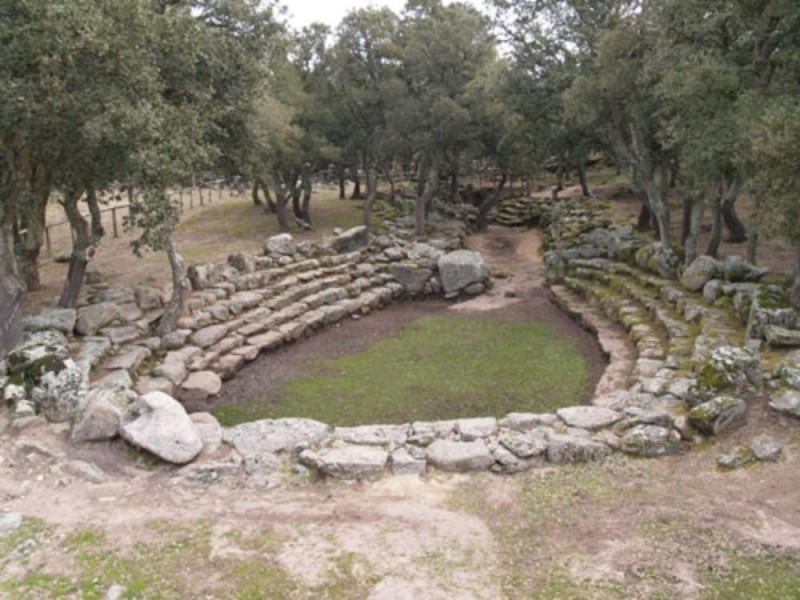Romanzesu
The archaeological complex of Romanzesu is one of the main religious settlements of Nuragic age. The definition of federal Nuragic sanctuary was given by the famous archaeologist Giovanni Lilliu to indicate a worship place frequented by people from distant villages. Usually dedicated to the water cult, these sanctuaries were characterised by different religious buildings (well temple, in antis temple, megaron-style temple). It is believed that the most powerful clans of central Sardinia used to meet here to make alliances or declare war. In common buildings, religious and civil feasts, the market with political meetings coexisted.
The sanctuary village of Romanzesu extends to seven hectares in a cork forest, with several religious buildings and about a hundred huts. The peculiarity of this archaeological site is a wide ritual area with an elliptical granite structure, connected with a smaller area. Here, during ritual ablutions and ordeal rites, people charged with serious accusations were submitted to divine judgment through water. The well temple of the holy font is characterised by a vestibule (with a pit for sacrifices and an ex-voto room), a flight of stairs and a tholos chamber to collect water. There are also two megaron- style temples, one of them particularly important for perimetric benches used to leave offerings and a circular hole to support water containers for ritual ablutions.
The structures of the village date back to a period from the Middle Bronze to Recent and Final Bronze Age (16th- 9th century BC). Afterwards the Romans occupied this settlement and built the mansiones (farms), hence the toponym Romanzesu.
Partially accessible to disabled people.

